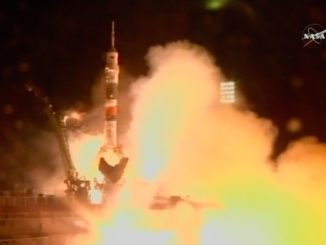A Russian Soyuz rocket rolled to its launch pad in Kazakhstan early Monday aboard a specially-designed rail car, three days before sending a Russian cosmonaut and U.S. astronaut to the International Space Station.
The three-stage launcher emerged from the Soyuz integration building at the Baikonur Cosmodrome just before sunrise Monday for the journey to Launch Pad No. 1, where ground crews used a hydraulic lift to hoist the rocket vertical. Rotating work platforms raised into position around the Soyuz booster to give workers access to the vehicle for final preflight checks.
Technicians then rotated the Soyuz and its launch mount to align with the flight azimuth needed to reach the space station, a step seen in time lapse at the end of the rollout video posted at the top of this page.
The Soyuz MS-04 spaceship is closed up inside the nose cone of the Soyuz rocket, ready to carry commander Fyodor Yurchikhin and NASA flight engineer Jack Fischer to join the Expedition 51 crew on the space station.
The crew will board the Soyuz spacecraft and strap into their seats around two-and-a-half hours before liftoff, which is set for 0713:44 GMT (3:13:44 a.m. EDT; 1:13:44 p.m. Baikonur time) Thursday.
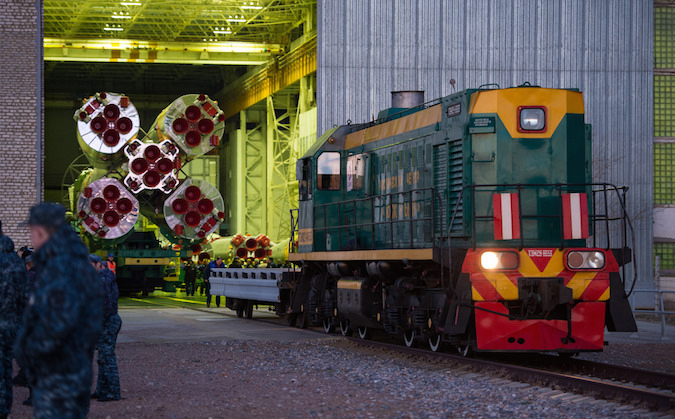
The craft will have just two crew members on-board — not the usual three — because Russia’s space agency is downsizing its crew complement on the space station until new Russian modules arrive at the complex, beginning with the launch of a long-delayed laboratory addition next year.
NASA has arranged to fill the empty seats on future Soyuz missions with U.S. astronauts.
The Soyuz-FG rocket will deploy the crew ferry craft in orbit around nine minutes after launch to kick off a fast-track six-hour approach to the space station. The capsule will dock with the research lab’s Poisk module at 1323 GMT (9:23 a.m. EDT) Thursday after a radar-guided automated rendezvous.
Yurchikhin, 58, is preparing for his fifth space mission, and his fourth long-duration stay on the space station.
Born and raised in Georgia, then a Soviet state, Yurchikhin moved to Moscow to attend school and worked as an engineer and instructor for RSC Energia, a Russian space contractor, on the Mir space station program in the 1980s and 1990s until his selection as a cosmonaut in 1997.
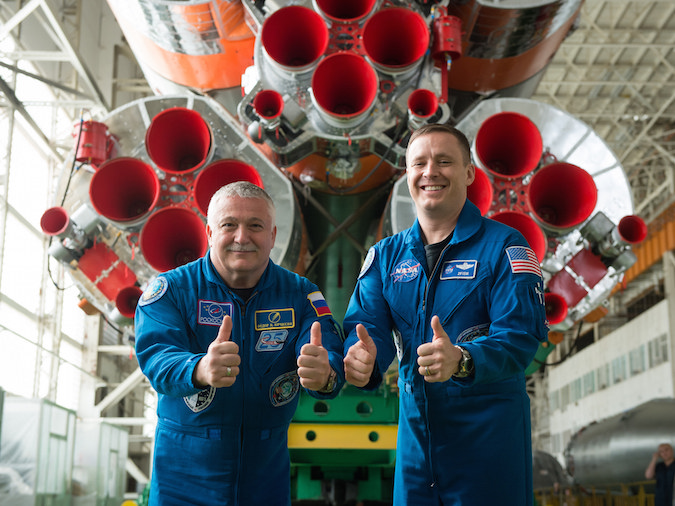
Yurchikhin’s first spaceflight was on the space shuttle Atlantis’s 11-day STS-112 mission to the International Space Station in 2002. He then completed three long-term stints on the outpost in 2007, 2010 and 2013, logging 537 days in orbit over his four missions.
Jack Fischer will make his first spaceflight after his selection to join NASA’s astronaut corps in 2009. The 43-year-old native of Louisville, Colorado, is a graduate of the U.S. Air Force Academy and MIT.
Fischer, a colonel in the U.S. Air Force, was a F-15 and F-22 test pilot and worked in the Pentagon before becoming an astronaut.
Expedition 51 commander Peggy Whitson, French-born flight engineer Thomas Pesquet and cosmonaut Oleg Novitskiy will welcome the two-man crew after Thursday’s docking, boosting the station’s crew size to five.
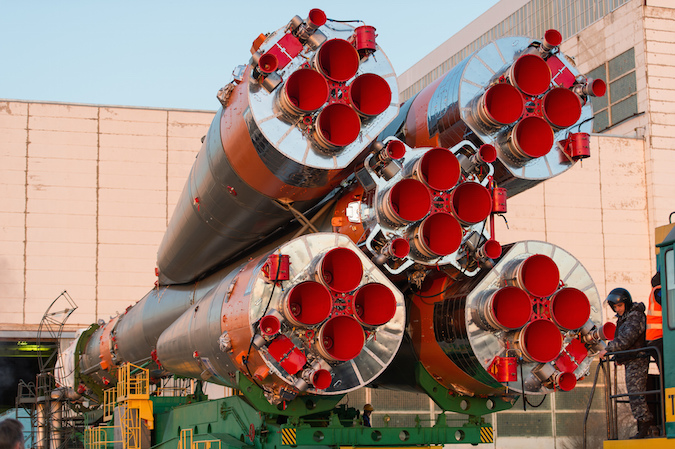
Astronaut Shane Kimbrough and cosmonauts Sergey Ryzhikov and Andrey Borisenko returned to Earth on April 10, temporarily reducing the station’s staff until Yurchikhin and Fischer’s arrival.
Thursday’s launch and docking of a new space station crew will come less than two days after a commercial Orbital ATK Cygnus supply ship blasts off from Cape Canaveral with 7,443 pounds (3,376 kilograms) of cargo and provisions. The Cygnus cargo carrier is scheduled to arrive at the space station Saturday after a four-day rendezvous profile following its Tuesday blastoff on a United Launch Alliance Atlas 5 rocket.
Yurchikhin and Fischer will remain at the space station until early September, when they will land back in Kazakhstan with Whitson, whose stay was extended three months to ensure three crew members are at the complex in June and July after her crewmates Novitskiy and Pesquet return home in early June.
More photos of Monday’s rollout are posted below.
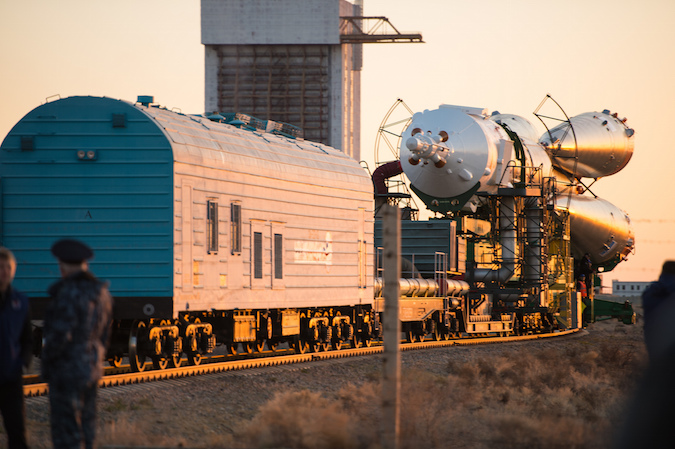
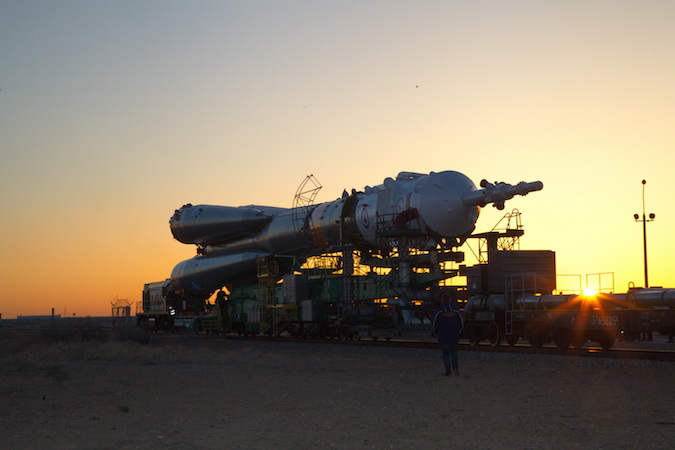
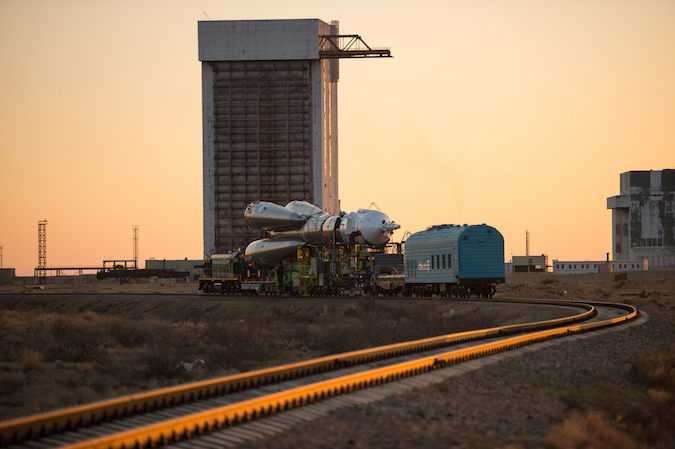
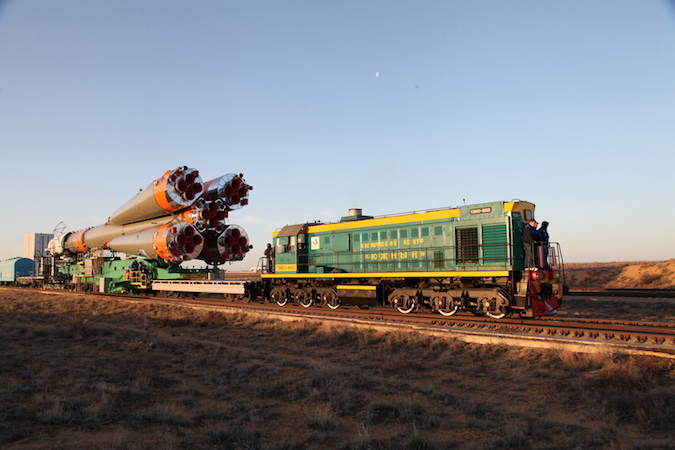
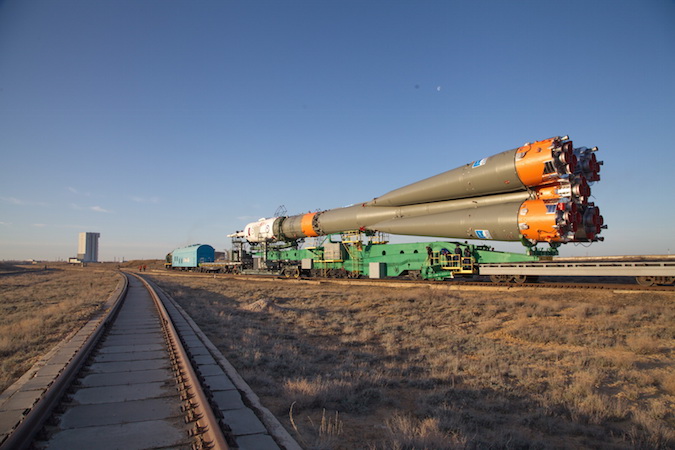
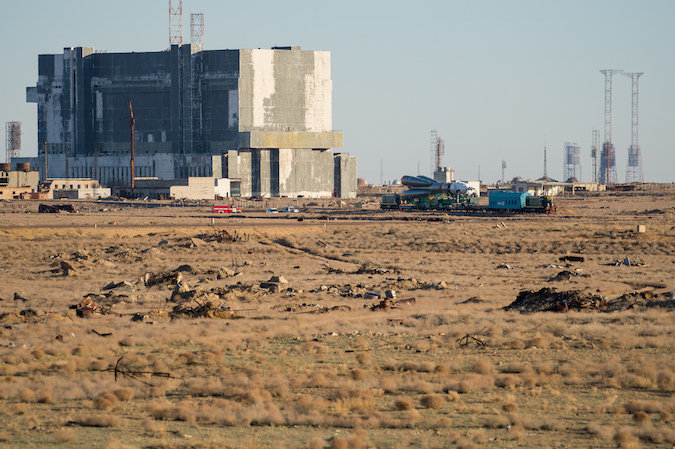
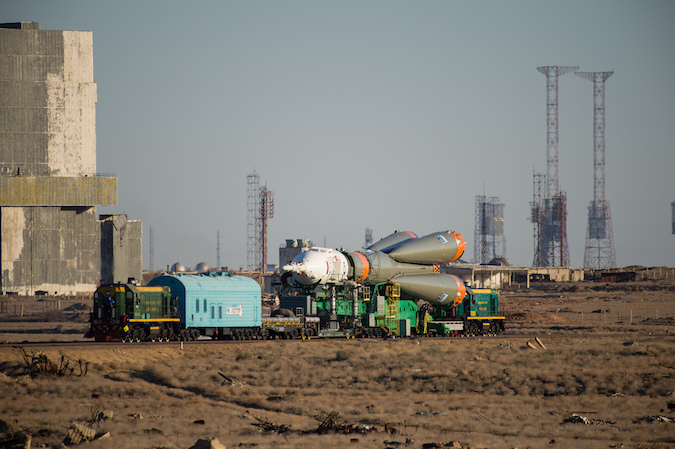
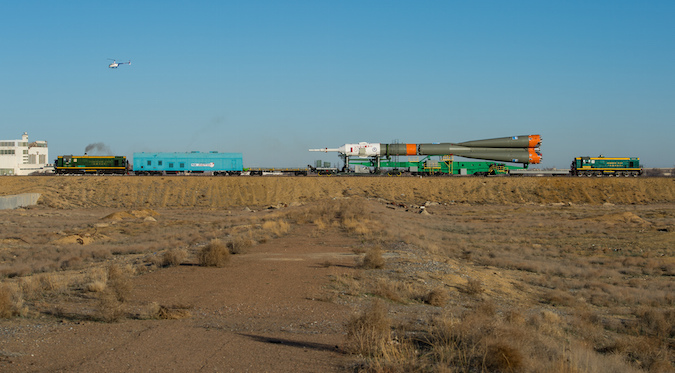
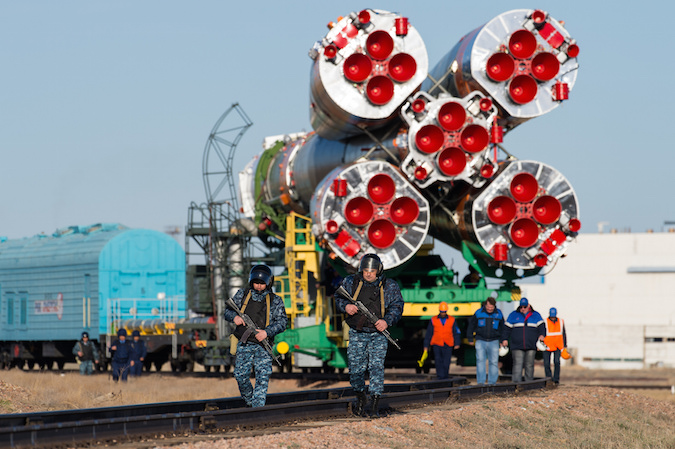
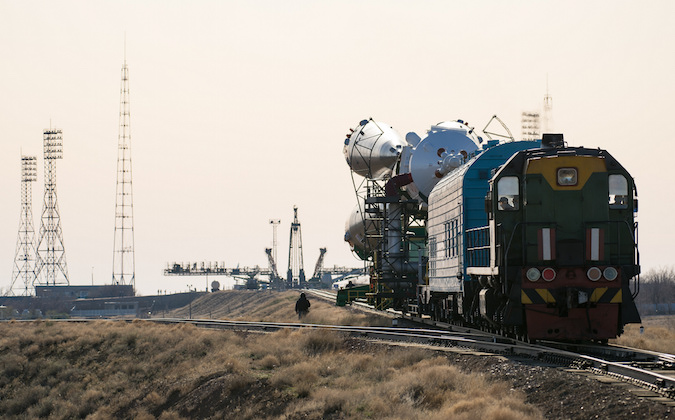
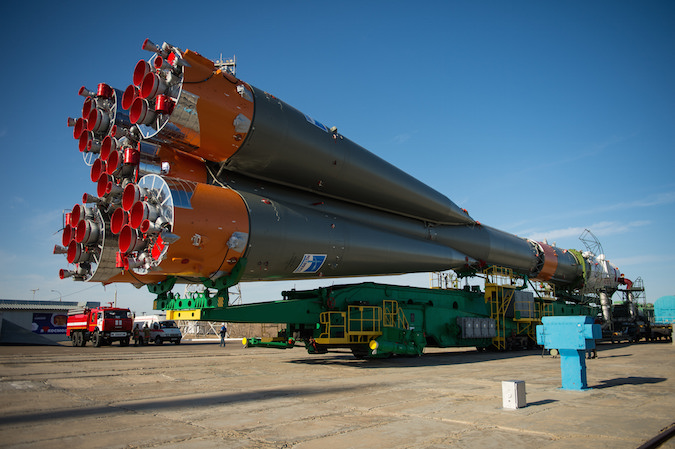
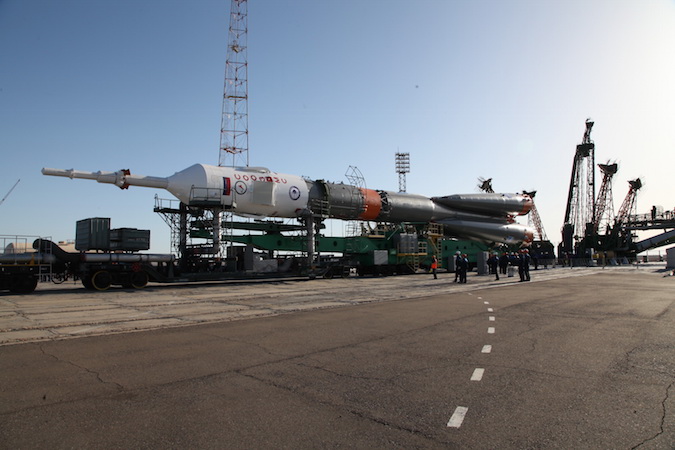
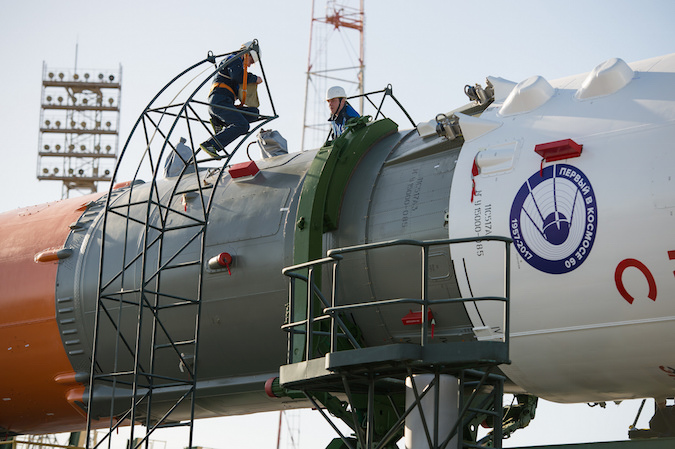
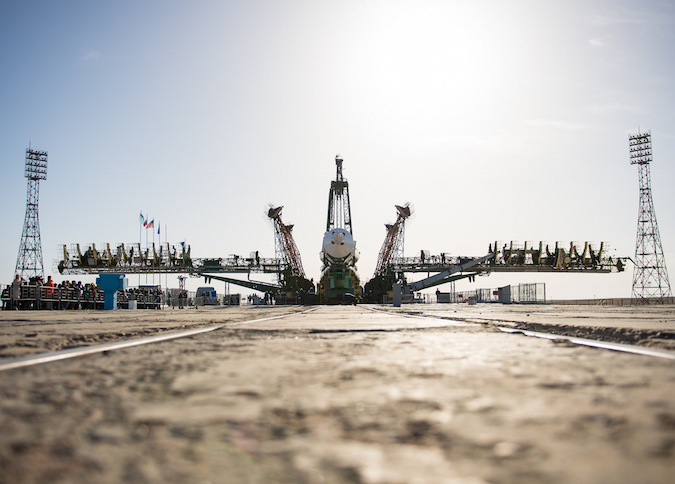
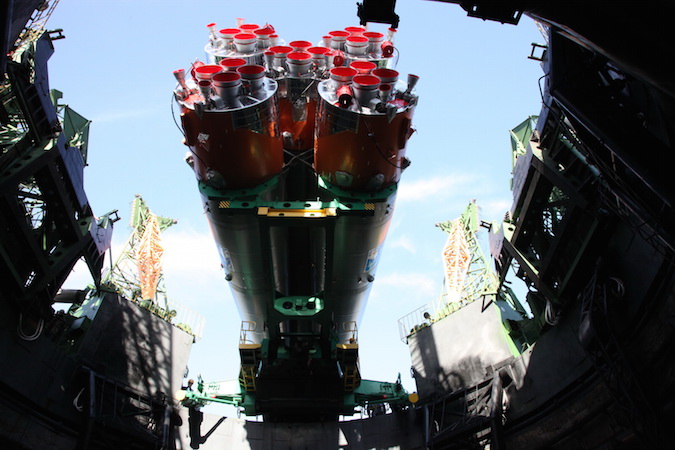
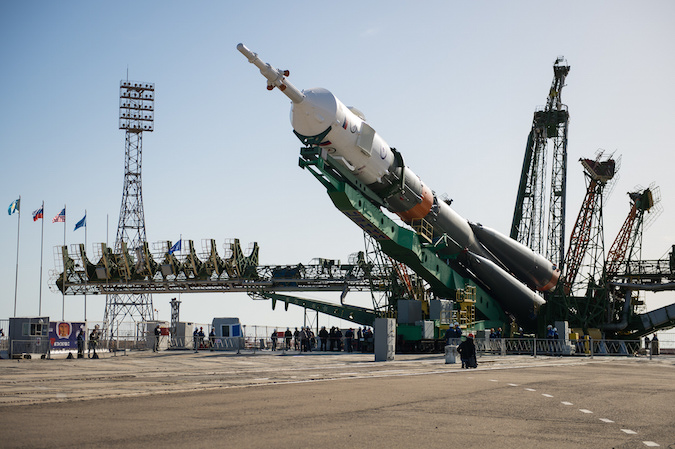
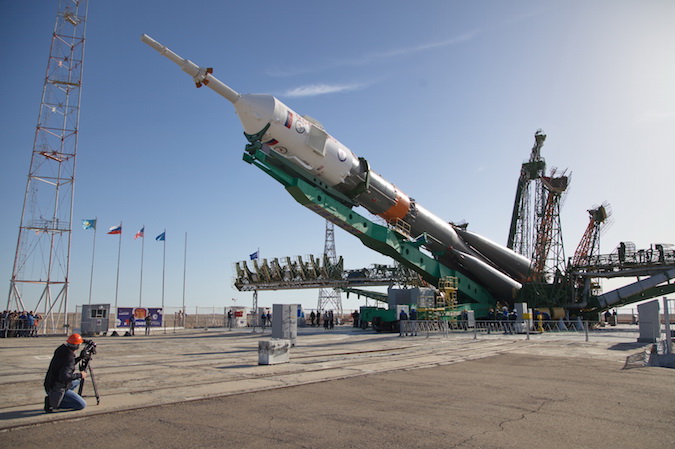
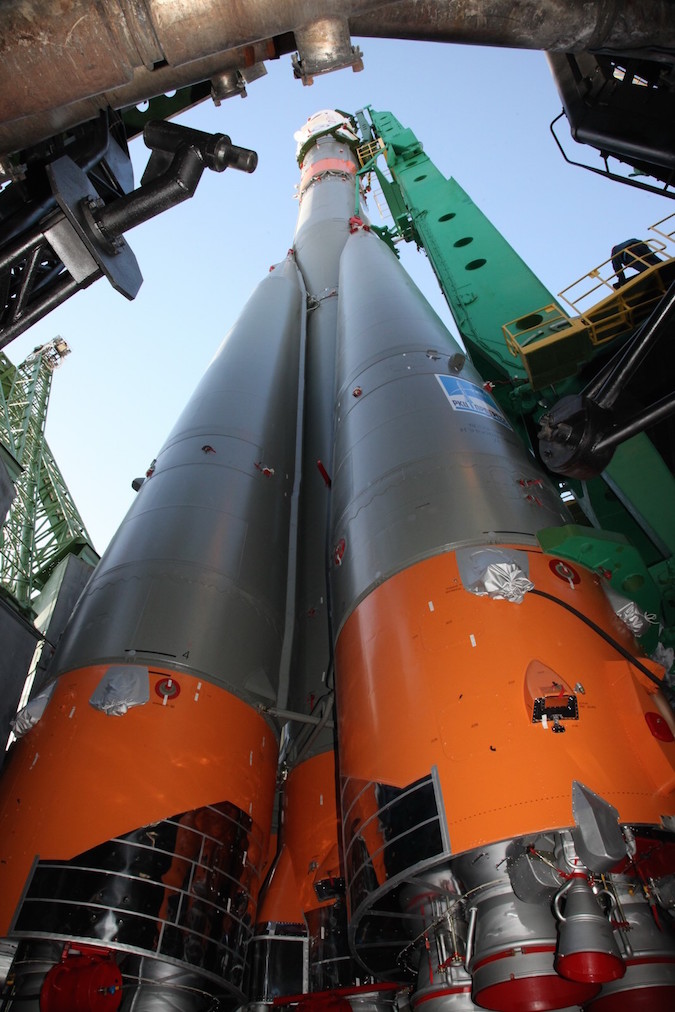
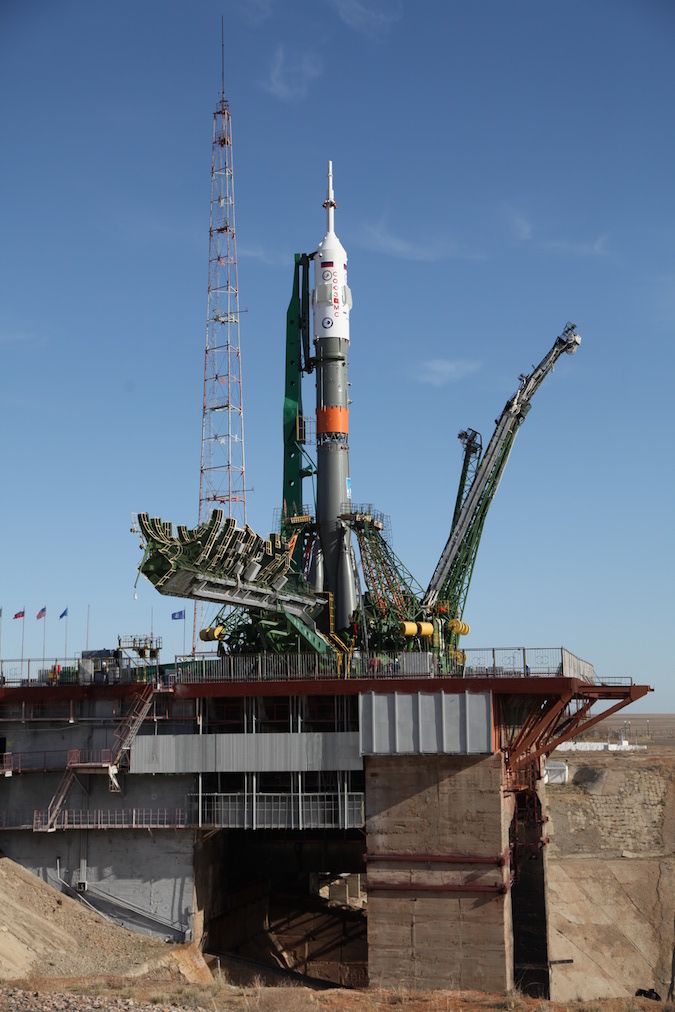
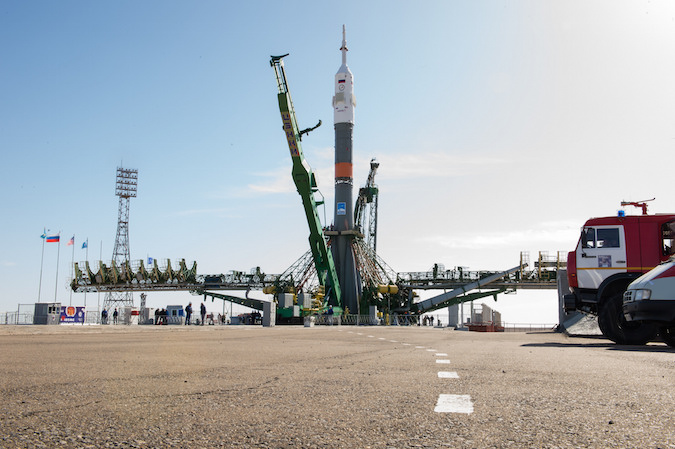
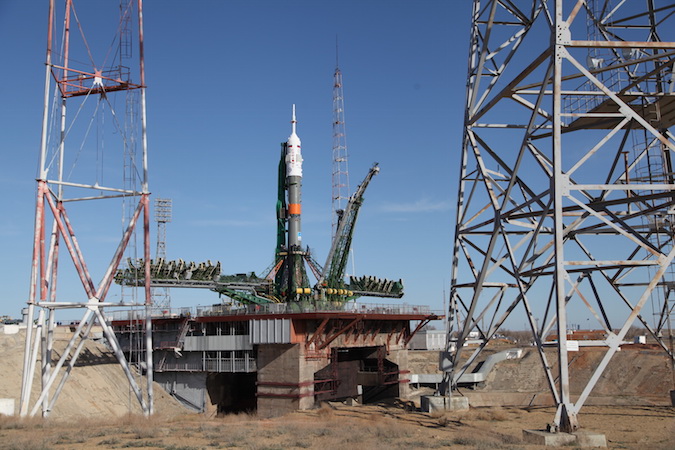
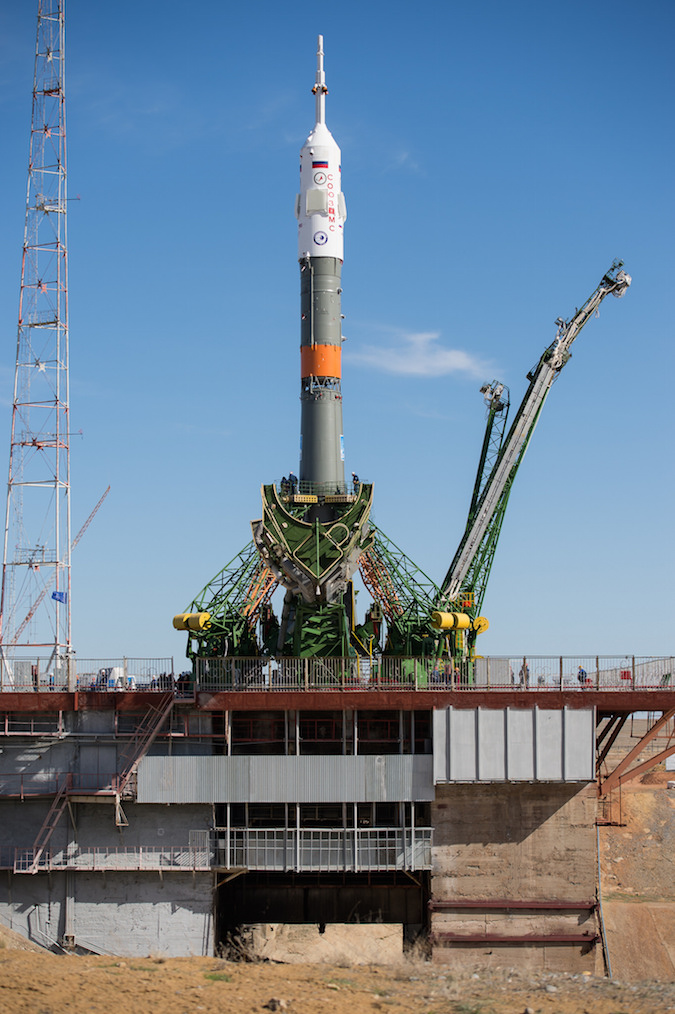
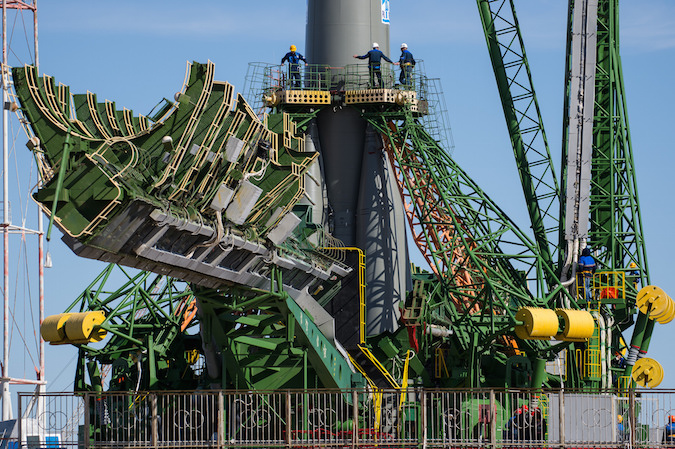
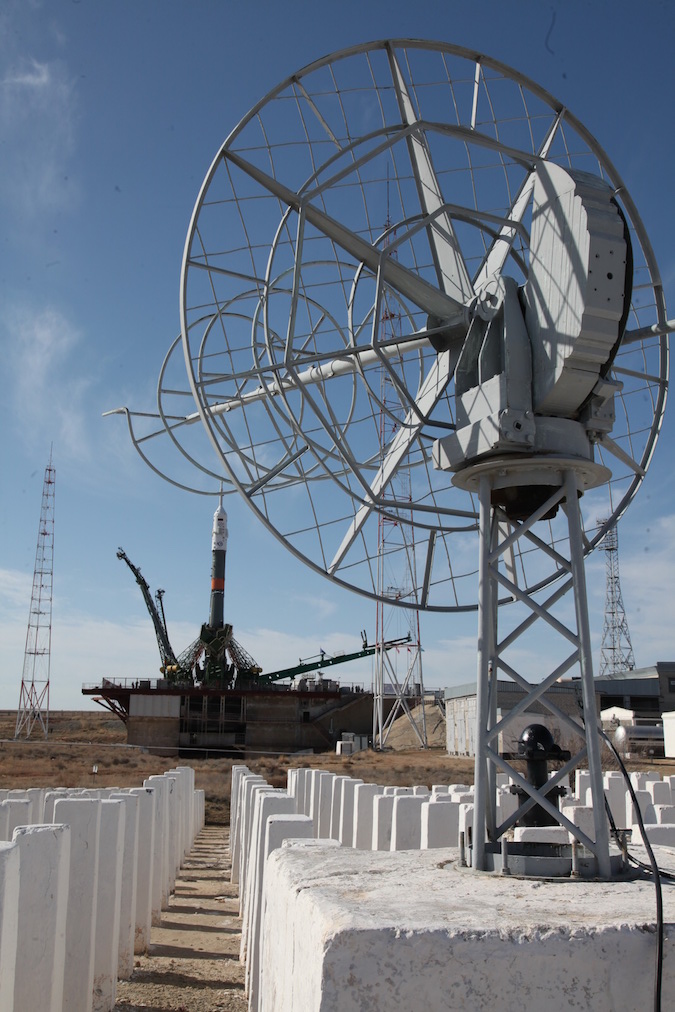
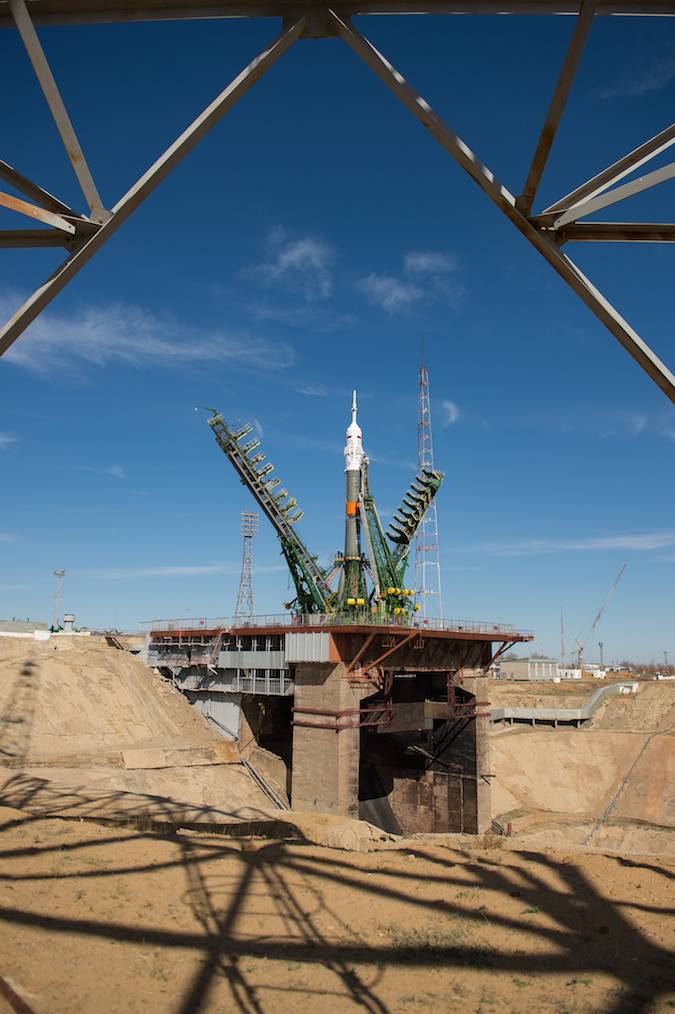
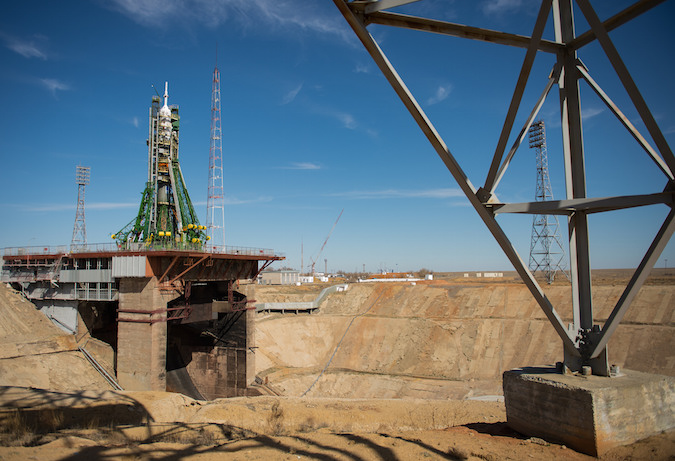
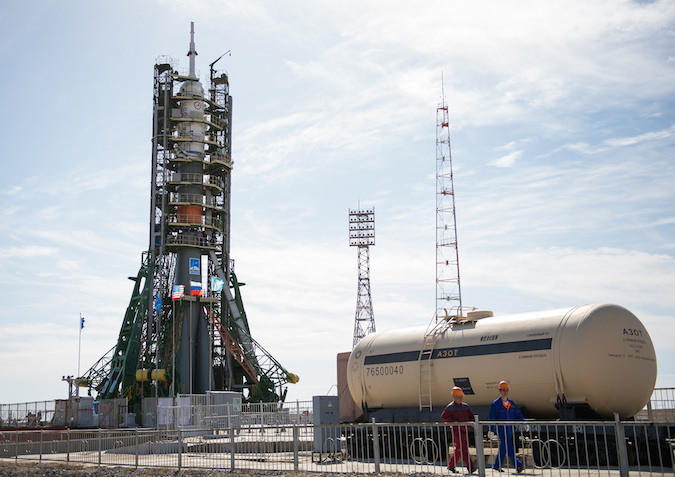
Email the author.
Follow Stephen Clark on Twitter: @StephenClark1.



